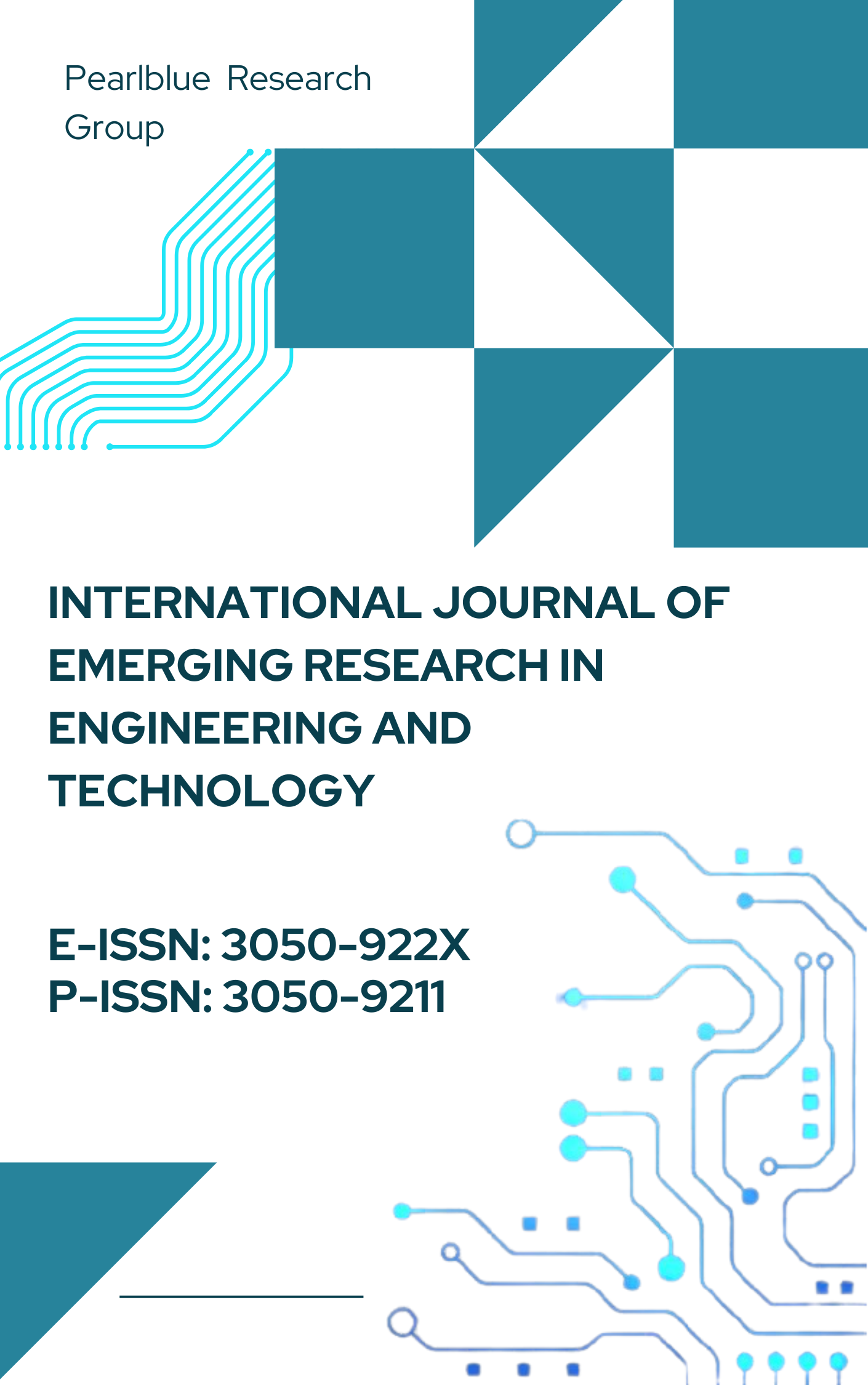FHIR-to-Snowflake: Building Interoperable Healthcare Lakehouses Across State Exchanges
DOI:
https://doi.org/10.63282/3050-922X.IJERET-V4I3P106Keywords:
FHIR (Fast Healthcare Interoperability Resources), Snowflake, Healthcare Lakehouse, Interoperability, Eligibility Data, Encounter Sharing, TPAs (Third-Party Administrators), Payers, Healthcare Data Integration, State Exchanges, Data Sharing, Healthcare Data Standards, Cloud Data Platforms, API Integration, Healthcare Technology, Data Security, Regulatory Compliance, HIPAA, Healthcare Data Transformation, Multi-Cloud Architecture, Data Pipelines, ETL (Extract, Transform, Load)Abstract
The combination of FHIR (Fast Healthcare Interoperability Resources) with Snowflake is investigated in this paper to build interoperable healthcare lakehouses enabling effective interchange of eligibility and encounter data between Third-Party Administrators (TPAs) and payers. Healthcare data interoperability still presents a significant obstacle across state exchanges as broken systems cause delays, inefficiencies, and higher costs by impeding seamless data flow. Using Snowflake's scalable data cloud platform and FHIR APIs, this solution offers secure, real-time data sharing enabling TPAs and payers to access and distribute critical patient data like eligibility status and encounter history. This approach reduces the complexity of several data systems and advances a compliant, coherent data environment following industry standards. For healthcare players, this integration greatly increases operational efficiency, sharpens decision-making & reduces their expenses. Furthermore, it finally improves patient care by means of quick access to accurate more data, encouragement of transparency, & support of better informed clinical and also more financial decisions. Emphasizing the need of improving healthcare data interoperability for the advantage of all stakeholders in the healthcare ecosystem, the article outlines the transforming possibilities of combining Snowflake and FHIR APIs
References
[1] Gavrilov, Goce, Elena Vlahu-Gjorgievska, and Vladimir Trajkovik. "Healthcare data warehouse system supporting cross-border interoperability." Health informatics journal 26.2 (2020): 1321-1332.
[2] MacAdam, Katherine. "Interoperability and the path to comprehensive health information exchange." NYU Ann. Surv. Am. L. 76 (2020): 743.
[3] Vasanta Kumar Tarra, and Arun Kumar Mittapelly. “AI-Powered Workflow Automation in Salesforce: How Machine Learning Optimizes Internal Business Processes and Reduces Manual Effort”. Los Angeles Journal of Intelligent Systems and Pattern Recognition, vol. 3, Apr. 2023, pp. 149-71
[4] Dixon, Brian E., et al. "Health information exchange and interoperability." Clinical Informatics study guide: text and review. Cham: Springer International Publishing, 2022. 203-219.
[5] Syed, Ali Asghar Mehdi, and Erik Anazagasty. “Hybrid Cloud Strategies in Enterprise IT: Best Practices for Integrating AWS With on-Premise Datacenters”. American Journal of Data Science and Artificial Intelligence Innovations, vol. 2, Aug. 2022, pp. 286-09
[6] EETI, SHANMUKHA. "Key Technologies and Methods for Building Scalable Data Lakes." (2022).
[7] Micalo, Silvia. Healthtech Innovation: How Entrepreneurs Can Define and Build the Value of Their New Products. CRC Press, 2022.
[8] Syed, Ali Asghar Mehdi, and Shujat Ali. “Multi-Tenancy and Security in Salesforce: Addressing Challenges and Solutions for Enterprise-Level Salesforce Integrations”. Newark Journal of Human-Centric AI and Robotics Interaction, vol. 3, Feb. 2023, pp. 356-7
[9] Peretokin, Vadim, et al. "Overview of the SMART-BEAR technical infrastructure." Proceedings of the 8th International Conference on Information and Communication Technologies for Ageing Well and e-Health-ICT4AWE,. SciTePress, 2022.
[10] Atluri, Anusha, and Vijay Reddy. “Total Rewards Transformation: Exploring Oracle HCM’s Next-Level Compensation Modules”. International Journal of Emerging Research in Engineering and Technology, vol. 4, no. 1, Mar. 2023, pp. 45-53
[11] Nambiar, Athira, and Divyansh Mundra. "An overview of data warehouse and data lake in modern enterprise data management." Big data and cognitive computing 6.4 (2022): 132.
[12] Vasanta Kumar Tarra, and Arun Kumar Mittapelly. “Predictive Analytics for Risk Assessment & Underwriting”. JOURNAL OF RECENT TRENDS IN COMPUTER SCIENCE AND ENGINEERING ( JRTCSE), vol. 10, no. 2, Oct. 2022, pp. 51-70
[13] Kothandapani, Hariharan Pappil. "Integrating Robotic Process Automation and Machine Learning in Data Lakes for Automated Model Deployment, Retraining, and Data-Driven Decision Making." (2021): 16-30.
[14] Kupunarapu, Sujith Kumar. "AI-Driven Crew Scheduling and Workforce Management for Improved Railroad Efficiency." International Journal of Science And Engineering 8.3 (2022): 30-37.
[15] Syed, Ali Asghar Mehdi, and Shujat Ali. “Linux Container Security: Evaluating Security Measures for Linux Containers in DevOps Workflows”. American Journal of Autonomous Systems and Robotics Engineering, vol. 2, Dec. 2022, pp. 352-75
[16] Zeydan, Engin, and Josep Mangues-Bafalluy. "Recent advances in data engineering for networking." Ieee Access 10 (2022): 34449-34496.
[17] Varma, Yasodhara. “Scaling AI: Best Practices in Designing On-Premise & Cloud Infrastructure for Machine Learning”. International Journal of AI, BigData, Computational and Management Studies, vol. 4, no. 2, June 2023, pp. 40-51
[18] Galla, Eswar Prasad, et al. "AI-Driven Threat Detection: Leveraging Big Data For Advanced Cybersecurity Compliance." Available at SSRN 4980649 (2022).
[19] Anand, Sangeeta. “AI-Based Predictive Analytics for Identifying Fraudulent Health Insurance Claims”. International Journal of AI, BigData, Computational and Management Studies, vol. 4, no. 2, June 2023, pp. 39-47
[20] De Silva, Daswin, and Damminda Alahakoon. "An artificial intelligence life cycle: From conception to production." Patterns 3.6 (2022).
[21] Atluri, Anusha. “Post-Deployment Excellence: Advanced Strategies for Agile Oracle HCM Configurations”. International Journal of Emerging Research in Engineering and Technology, vol. 4, no. 1, Mar. 2023, pp. 37-44
[22] Madhavram, Chandrakanth, et al. "AI-Driven Threat Detection: Leveraging Big Data For Advanced Cybersecurity Compliance." Available at SSRN 5029406 (2022).
[23] Atluri, Anusha. “The Autonomous HR Department: Oracle HCM’s Cutting-Edge Automation Capabilities”. International Journal of Emerging Trends in Computer Science and Information Technology, vol. 3, no. 1, Mar. 2022, pp. 47-54
[24] Zhang, Yuhao, et al. "Distributed deep learning on data systems: a comparative analysis of approaches." Proceedings of the VLDB Endowment 14.10 (2021).
[25] Syed, Ali Asghar Mehdi. “Networking Automation With Ansible and AI: How Automation Can Enhance Network Security and Efficiency”. Los Angeles Journal of Intelligent Systems and Pattern Recognition, vol. 3, Apr. 2023, pp. 286-0
[26] Rigakos, George S. "Plural Policing in Saskatchewan First Nations." Ottawa (Ontario): Sécurité publique Canada (2008).
[27] Perera, A. P. M., and K. P. A. Ramanayake. "Assessing the effects of respondent driven sampling estimators on population characteristics." Conference Proceedings of the Asia International Conference on Multidisciplinary. Vol. 1. 2019.
[28] Lakshmikanthan, G. (2022). EdgeChain Health: A Secure Distributed Framework for Next-Generation Telemedicine. International Journal of AI, BigData, Computational and Management Studies, 3(1), 32-36.



